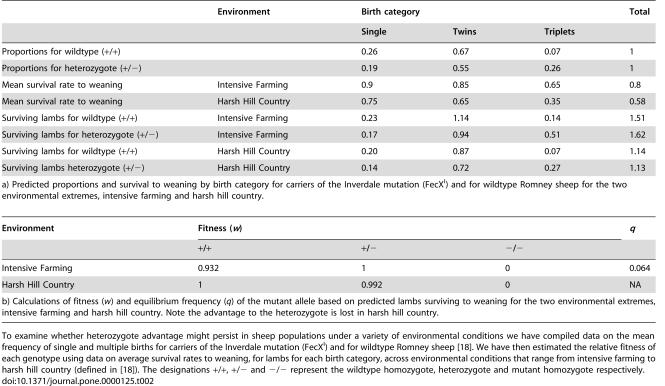| Environment | Fitness (w) | q | ||
| +/+ | +/− | −/− | ||
| Intensive Farming | 0.932 | 1 | 0 | 0.064 |
| Harsh Hill Country | 1 | 0.992 | 0 | NA |
| b) Calculations of fitness (w) and equilibrium frequency (q) of the mutant allele based on predicted lambs surviving to weaning for the two environmental extremes, intensive farming and harsh hill country. Note the advantage to the heterozygote is lost in harsh hill country. | ||||
To examine whether heterozygote advantage might persist in sheep populations under a variety of environmental conditions we have compiled data on the mean frequency of single and multiple births for carriers of the Inverdale mutation (FecXI) and for wildtype Romney sheep [18]. We have then estimated the relative fitness of each genotype using data on average survival rates to weaning, for lambs for each birth category, across environmental conditions that range from intensive farming to harsh hill country (defined in [18]). The designations +/+, +/− and −/− represent the wildtype homozygote, heterozygote and mutant homozygote respectively.

